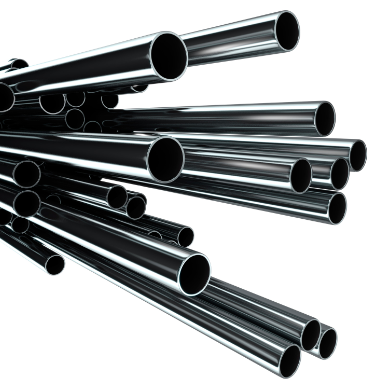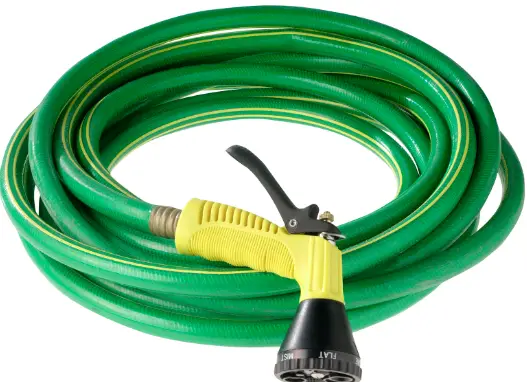Last Updated on November 25, 2022 by mdmtool
Pipes and hoses are often confused with one another. They are both used to carry liquids from one place to another. The line is usually better for longer distances and higher pressures, while the Hose is more flexible and can be used in tighter spaces.
What Is A Pipe?

Pipes are usually made of rigid materials like metal or plastic. They are generally installed in straight lines. Pipes also have a much more comprehensive range of diameters than hoses. Pipes can range from a few inches in diameter up to several feet. Pipes are better suited for longer distances and higher pressures. Hoses can be bent and shaped to fit around corners and into tight spaces.
What Is A Hose?

Hoses are typically made of more flexible materials like rubber or PVC. Hoses usually range from about 1/4 inch to 4 inches. Hoses are usually used for shorter distances and lower pressures than pipes.
What Is A Suction Hose?
A suction hose is a large-diameter pipeline that moves water from one location to another. Hoses are typically made of PVC or rubber and are used in various industries, including agriculture, construction, and mining.
What Is A Discharge Hose?
A discharge hose removes water from a pool, pond, or other body of water. The Hose is inserted into the water, and then the water is discharged through the Hose.
Difference Between Hose And Pipe

Hose and pipe have the following differences:
- Different Applications: Pipes are used in various applications, including oil and gas transportation, plumbing, and medical devices. Hoses are also used in multiple applications but are not typically for high-pressure applications.
- Manufacturing: Pipes are made from metal; they have a seam running down the middle of the pipe. While, hoses are made from the materials like rubber or PVC.
- Bend Radius Requirements: The pipe is generally more rigid than Hose. As a result, it requires more force to bend the pipe than a hose. This is why the pipe is usually used in applications requiring less bending, such as underground piping systems. On the other hand, the Hose can be bent much more quickly since it is designed to do so.
- Availability and Ease of Fabrication: Hoses are generally less expensive than pipes, and their installation is often easier. This is because hoses can be produced in longer lengths and with fewer fittings than pipes. In addition, hoses can be easily coiled and stored when not in use, which makes them more convenient for many applications.
- Weight Consideration: Pipes are always heavier than hoses of the same diameter and length because they have a thicker wall. Hoses have a thin wall in comparison to pipes.
- Ease of Installation: Hoses are typically easier to install than pipes.
- Vibration Considerations: The pipe is usually supported every few feet, so it is not subject to the same amount of vibration and movement as a hose. Hose generally needs to be supported more often, mainly if it carries fluids under pressure.
- Electrical Conductivity/Insulation: Hoses are made of non-conductive materials, while pipes are made of conductive materials.
- Pressure Resistance: Hoses are generally more pressure-resistant than pipes. This is because hoses can have reinforced structures, such as braided metal, which gives them additional strength. This difference is essential for applications where high pressures need to be avoided.
- Heat Dissipation/Insulation: Pipes are generally better at dissipating heat than hoses. This is due to the larger surface area to volume ratio of pipes. This is why lines are often used in high-temperature applications or where heat needs to be quickly dissipated. Hoses, however, are not as good at dissipating heat.
- Temperature Ratings: Most hoses are rated for a range of temperatures. Hoses made for general water use are usually rated for -40° to 212° Fahrenheit, while air and oil hoses have a more limited range -40° to 150° or 250° Fahrenheit.
- Maintenance Considerations: The pipe is easier to clean than the Hose because it has a smooth inner surface. On the other hand, Hose has a rough inner surface that can trap dirt and debris more efficiently. The pipe is also less likely to kink or become damaged than hose.

FAQs
How do you attach a hose to a pipe?
One way to attach a hose to a pipe is with a coupling. A coupling is a device that connects two pieces of equipment. Couplings often connect hoses to pipes because they provide a tight seal that prevents leaks. There are many types of couplings, and the one you use will depend on the style.
Is sink water the same as hose water?
No, sink water is not the same as hose water. Sink water is potable, meaning it is safe to drink. Hose water is not potable and should not be consumed. Sink water goes through a filtration process before it reaches your tap, while hose water does not.
Does a longer hose reduce water pressure?
No, a longer hose does not reduce water pressure. The water pressure is determined by the diameter of the Hose and the amount of water flowing through it
Can two hose pipes be connected?
Yes, two hose pipes can be connected.
Conclusion
Hoses and pipes are often used interchangeably, but they are not the same thing. Hoses are typically made of rubber or plastic, while pipes are made of metal or plastic. Stockings can be connected to pipes, but they require a coupling. Sink water is not the same as hose water; sink water is potable, while hose water is not. Finally, a longer hose does not reduce water pressure; the pressure is determined by the diameter of the Hose and the amount of water flowing through it.





